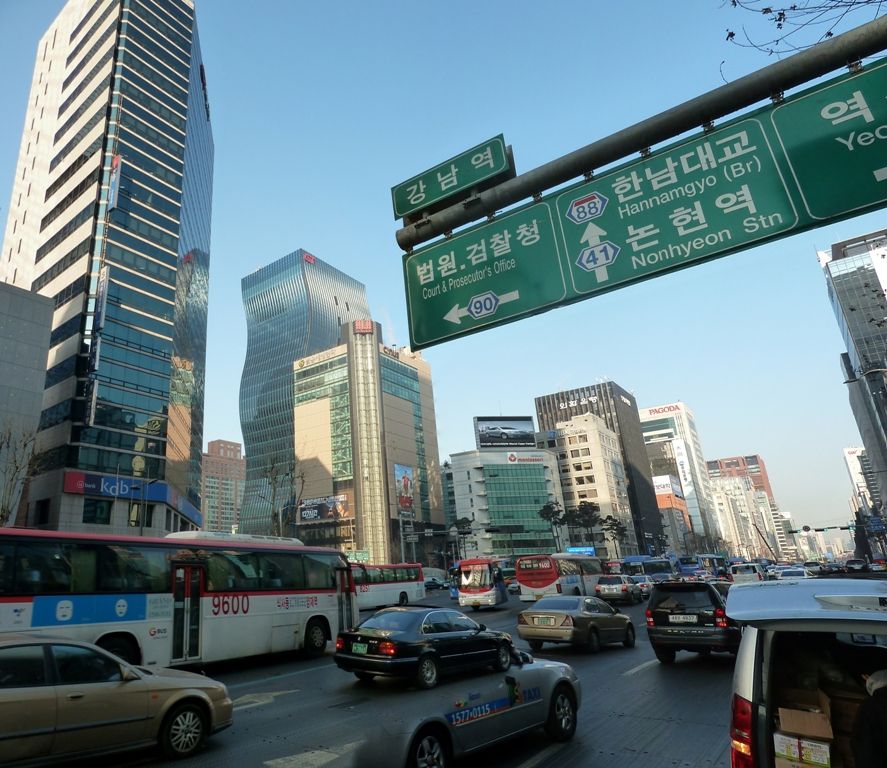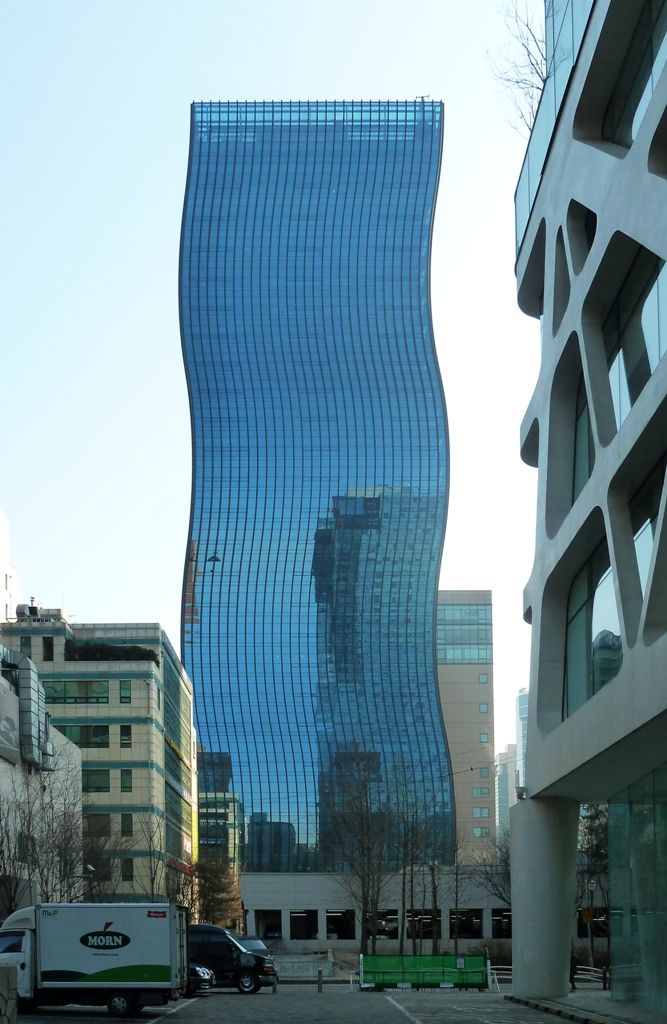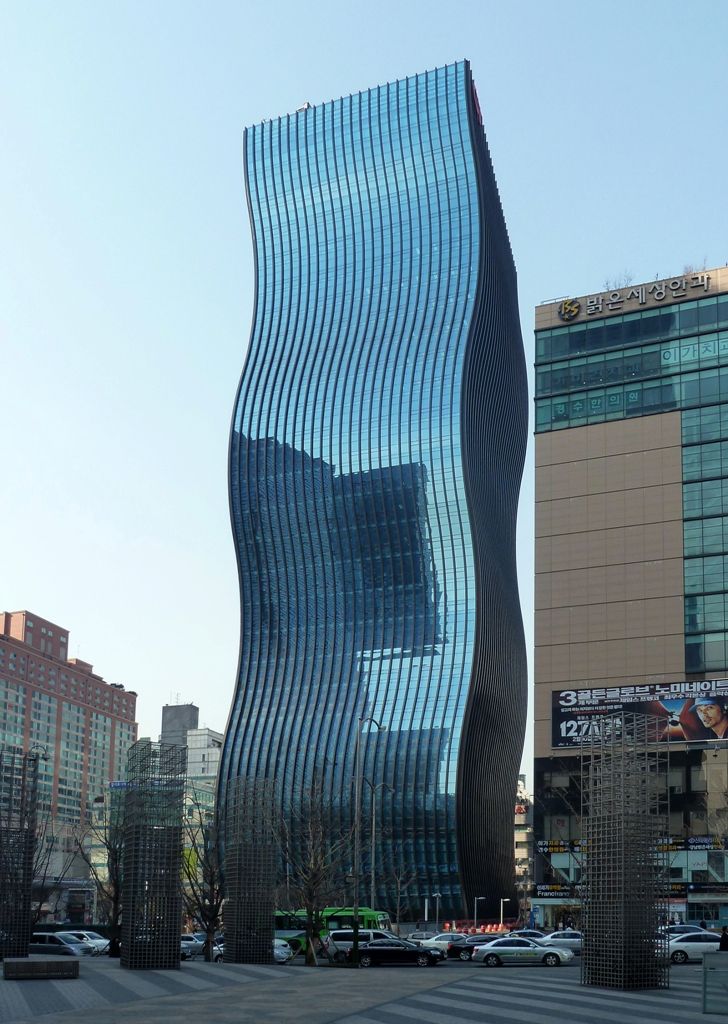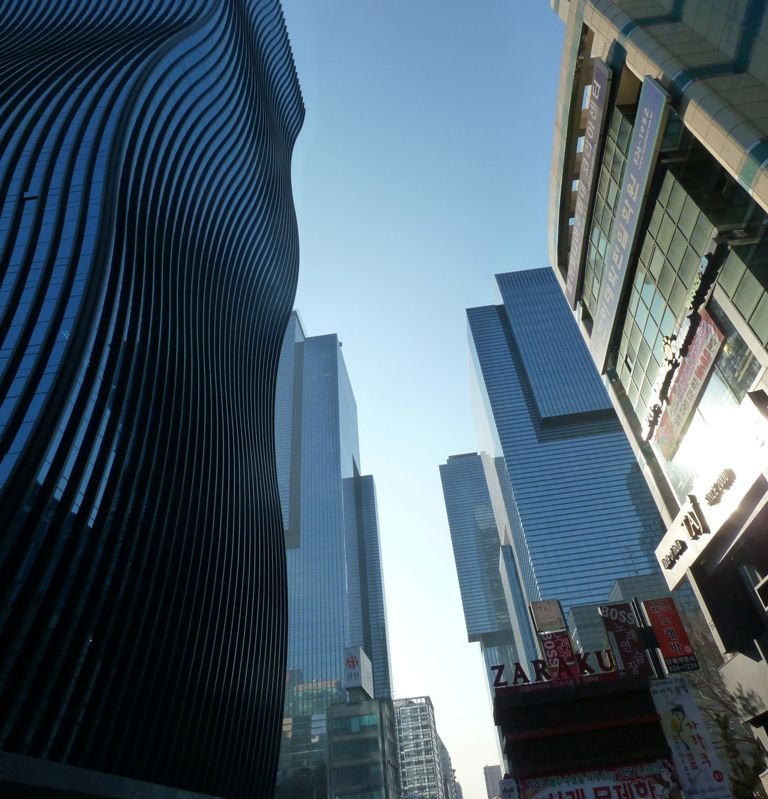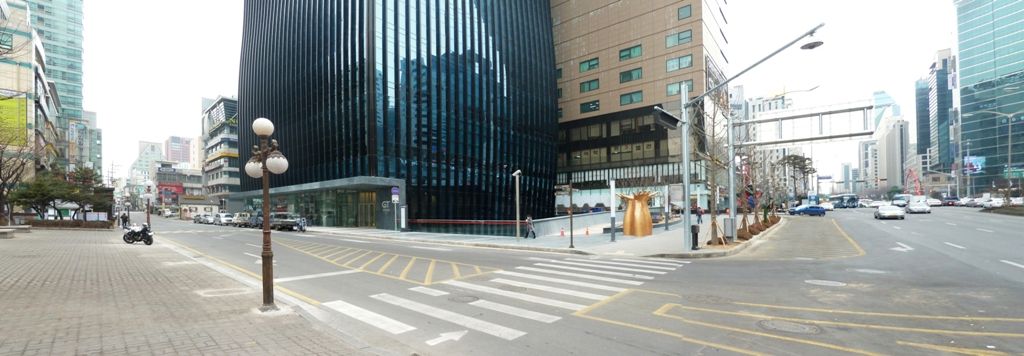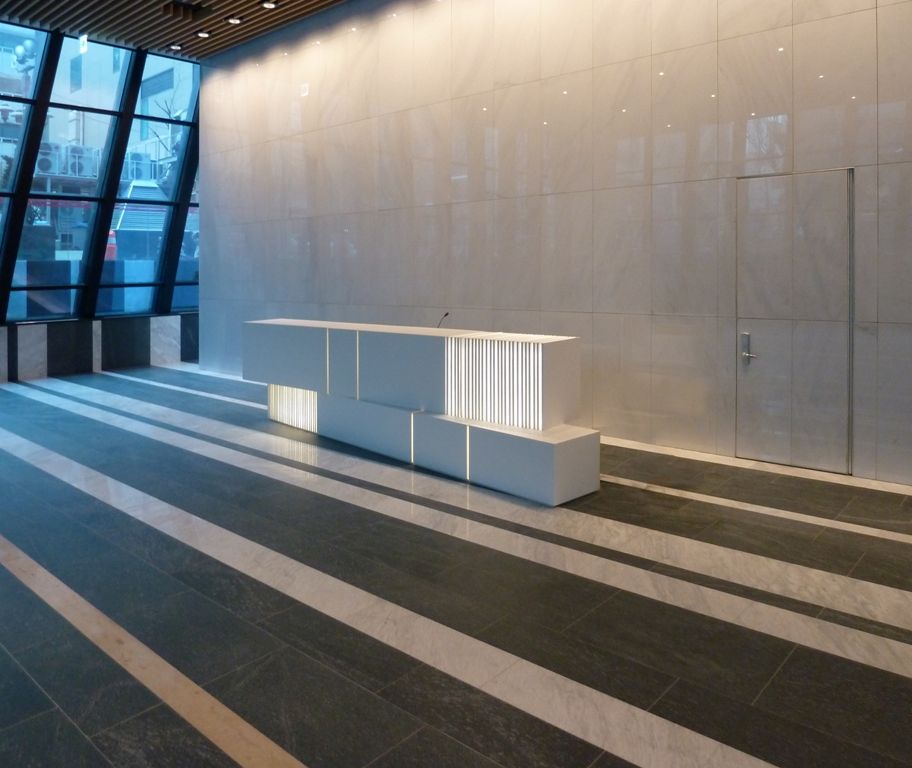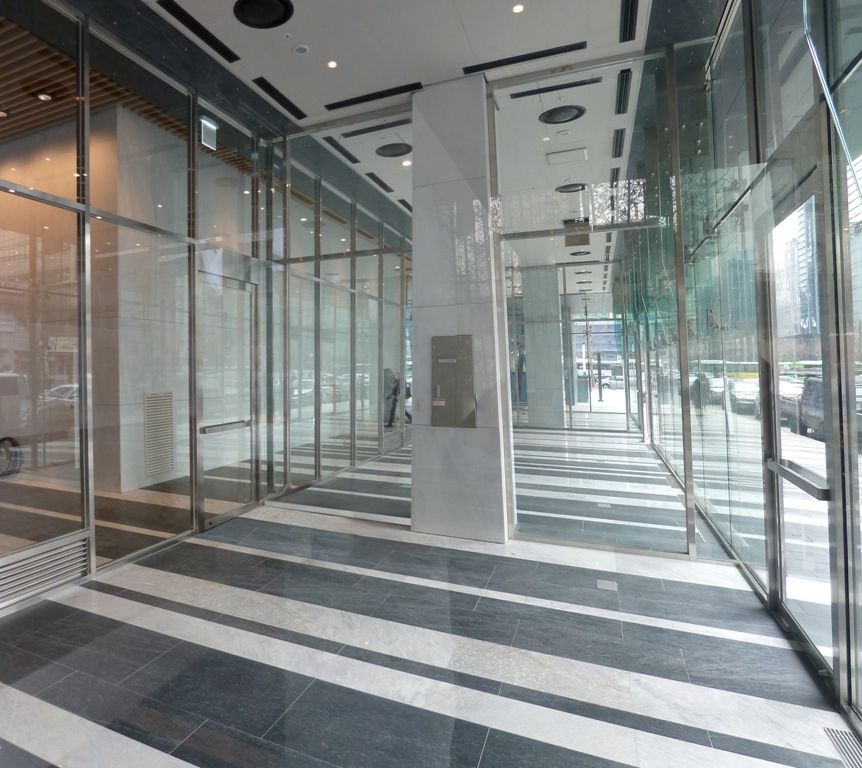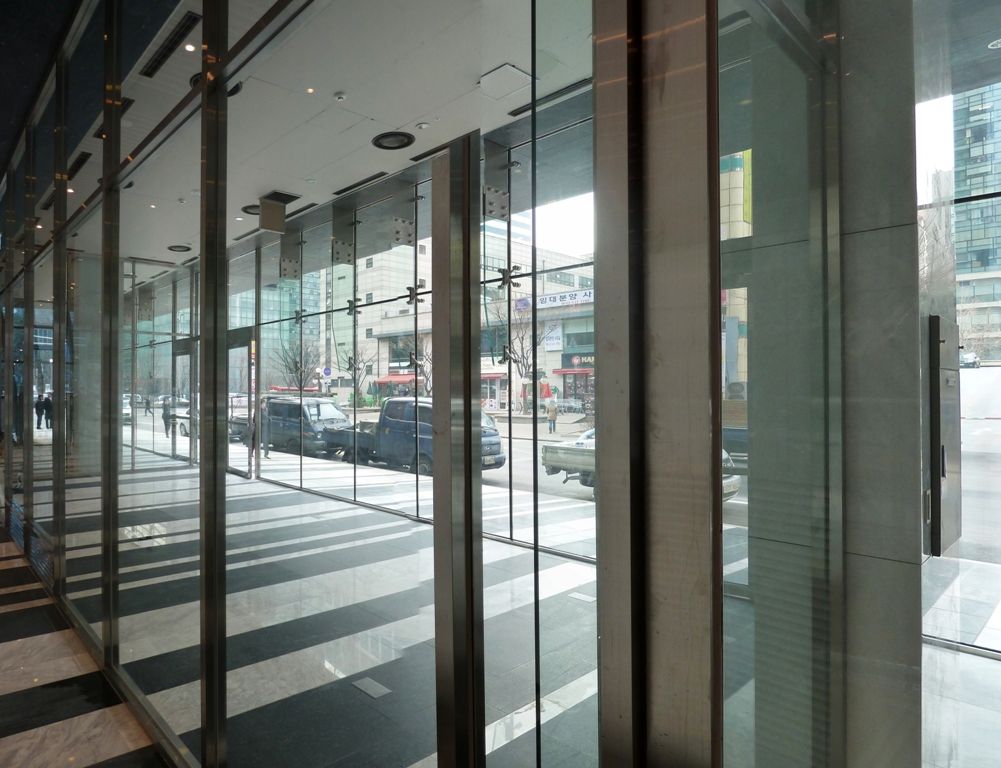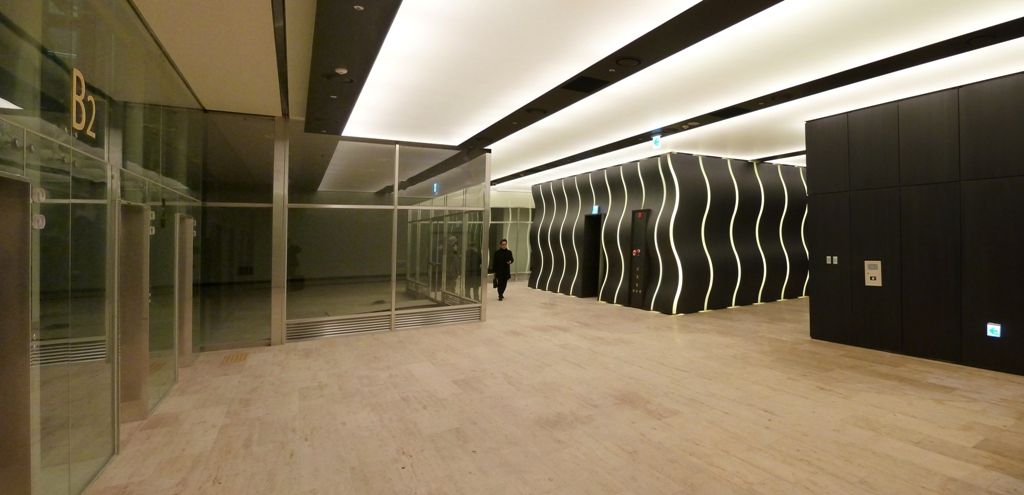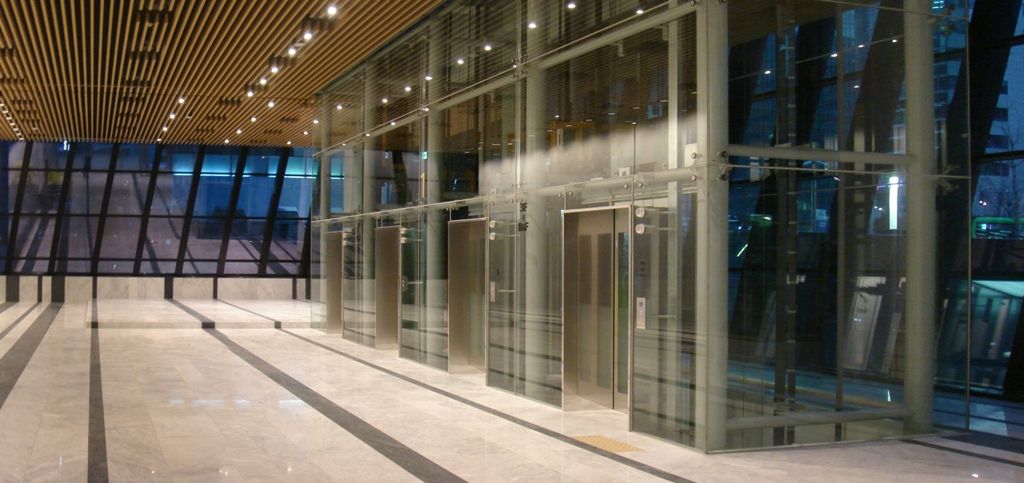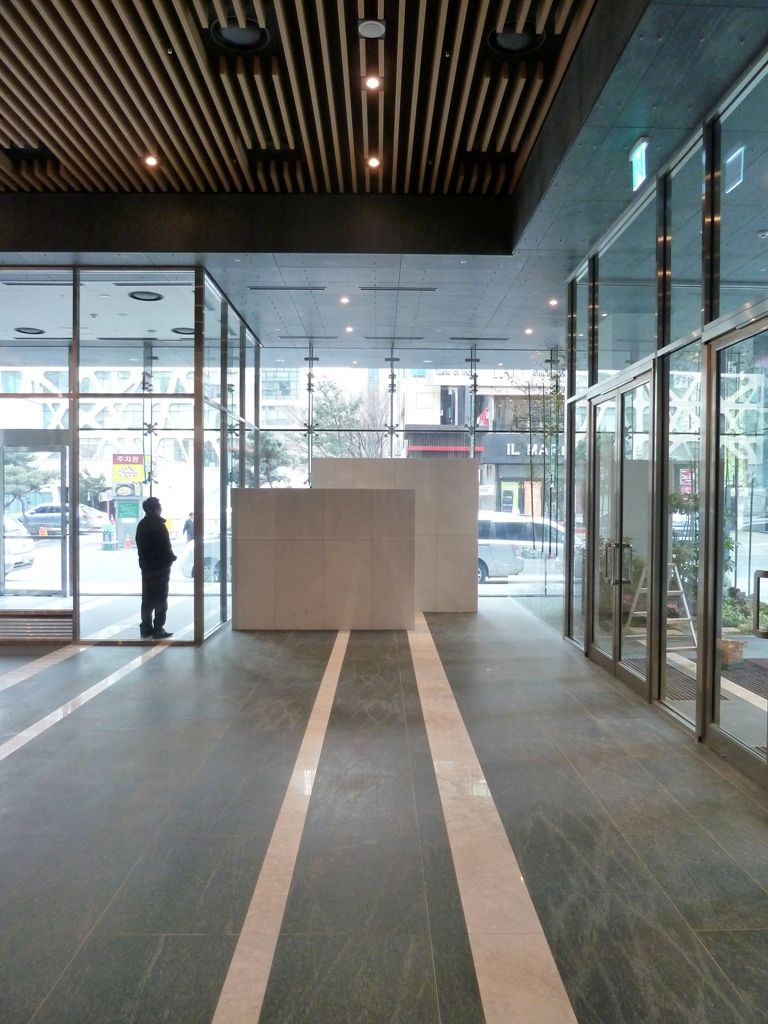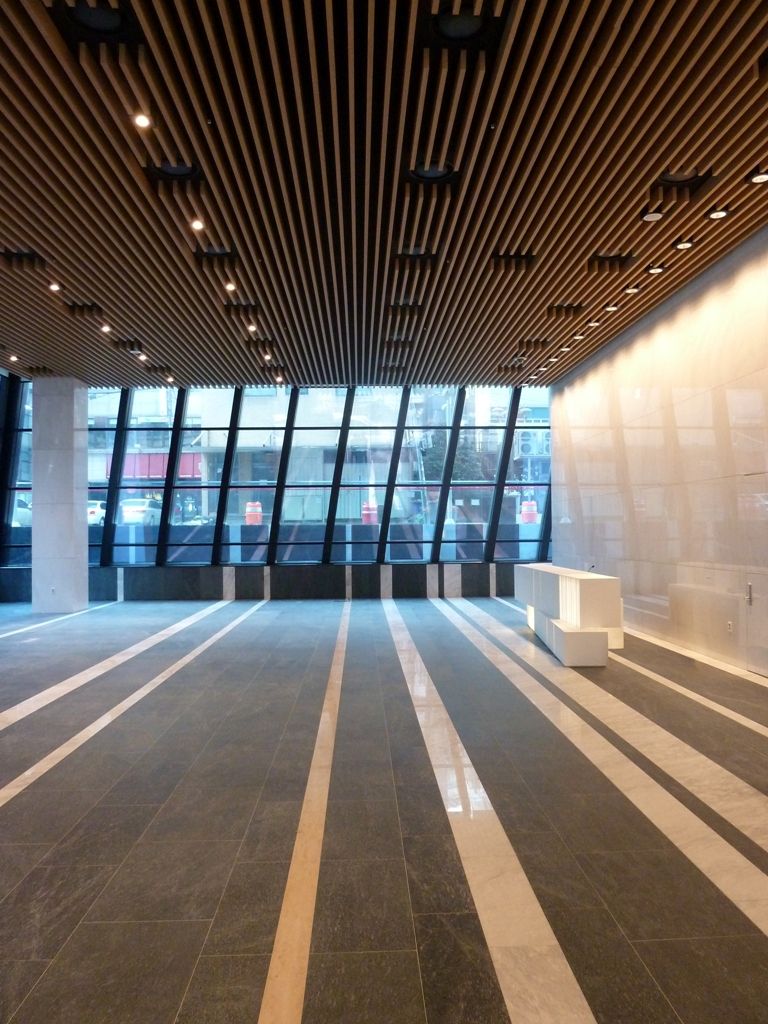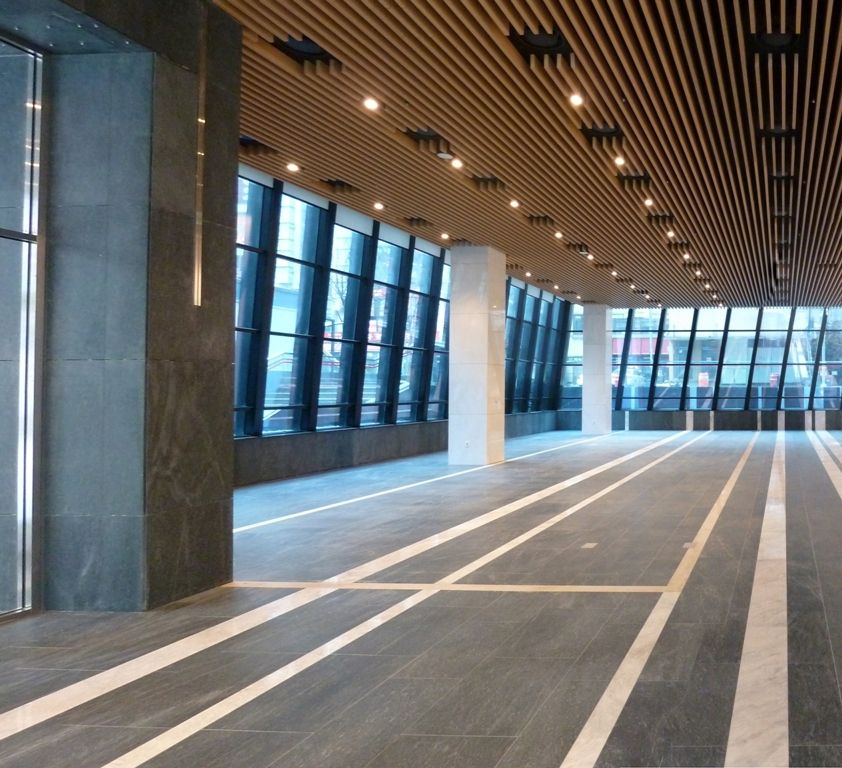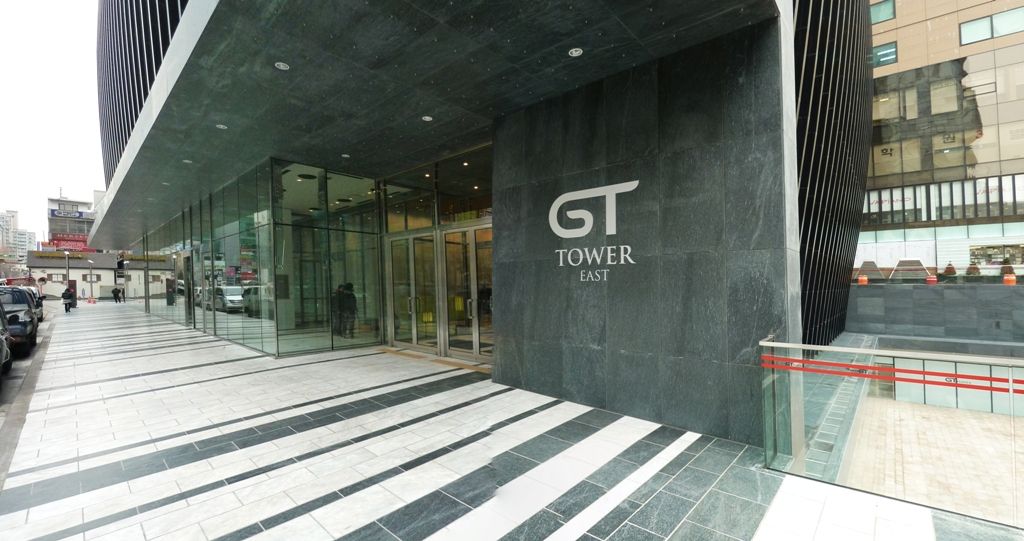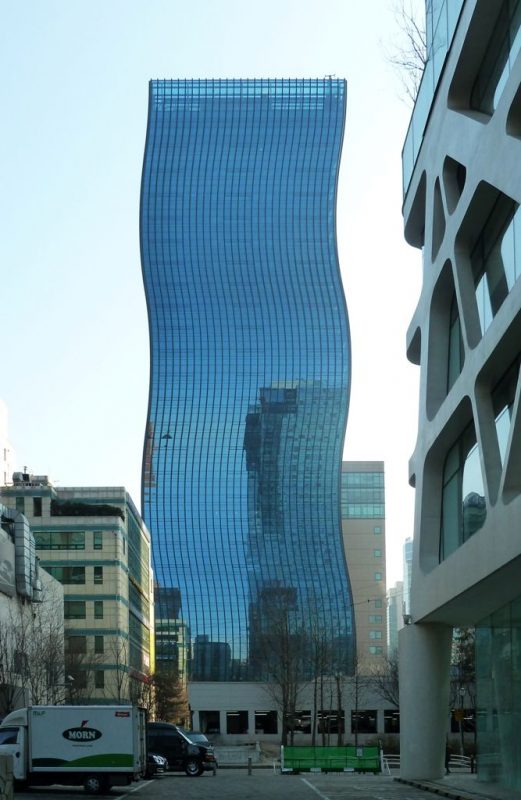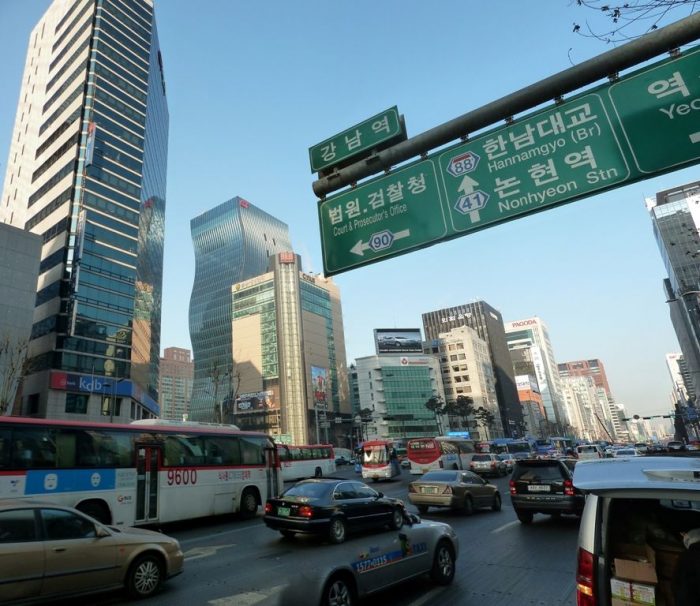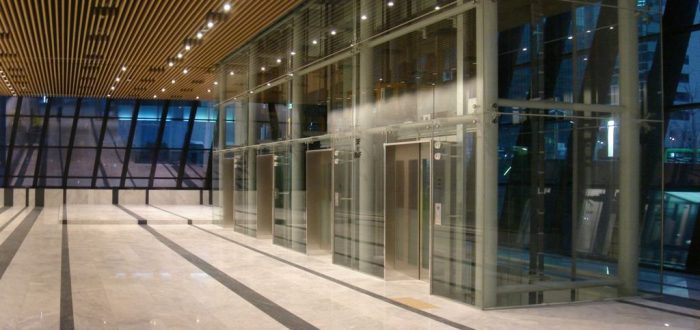GT Tower East ArchitectenConsort
Located in Seoul, South Korea, the GT tower East exists as a fascinating change to the angular architecture on the Korean capital with its elegantly undulating glass façade. Designed by the Dutch architectural firm ArchitectenConsort, based in Rotterdam, GT Tower East will form an architectural unit with the GT Tower West, yet to be built. The 130 meter high-rise has a uniform, glass finish for the façade resulting in an organically pure form that dances up into the infinity of the sky while reflecting the city around it.
Within its gross 54,000 square meters of floor space, the GT Tower East fulfills a range of purposes such as functional office spaces, commercial and cultural uses, and parking. With a flexible base plan designed to help retain the buildings value over time, a high adaptive capacity is achieved by placing a compact core at the heart of the floor plan and using a carefully thought out column structure. These design decisions were also made to protect the purity of the façade and ensure that it remained entirely unencumbered. For sustainability, the façade is well-insulated, solar panels were installed for generating power, and the building uses a lot of natural light and ventilation to create a pleasant working environment.
The glass façade’s wave motion was determined from an extensive preliminary investigation. The effect of the volume was achieved by shifting the floor areas along one of the two diagonals by a maximum of three meters. This shift occurs two and a half times over the total height of the building, so that each wave has a height of 48 meters. So as not to break up the vertical lines of the vertical lines of the façade by interrupting horizontal segmentation, the architects compressed the ceilings towards the outer façade to the size of a window frame. The pattern and dimensioning chosen for the black vertical window frames ensures a subtle balance with the semi-reflective blue glass panels that help accentuate the form.
In contrast with the surrounding buildings, the GT Tower East has been offset from the building line. The new urban space created by this action, allows for a sunken plaza that utilizes the below street level that remains attractive despite being submerged. By sheltering the visitors from wind and street noise a more pleasant and relaxed environment is created that also connects to shops and restaurants. In the entrance at ground level, the vertical interplay of lines of the tower is cut by a horizontal awning that brings back the human scale making it very accessible for the public. The natural stone tiles of the sidewalk continue into the lobby in a banded pattern, and although the central lobby and the commercial lobby each have their own individual character, the design is unmistakably connected and coherent.
Direct and indirect light is used to emphasize the experience of the various uses for the building. In the interior, light plays an important role, not just as a light source, but also as a decorative element. The GT Tower East is beautiful inside as well as out, giving the building a special, iconic appearance. With this tower completed only time will tell how it will fair next to the GT Tower West once it is constructed as well. As it stands alone however, the undulating form is simply eye-catching and refreshing, proving to be a great addition to the city.
Name of the building – GT Tower East
Location – Seocho-dong, Seocho-gu, Seoul, South Korea
Design – ArchitectenConsort, Rotterdam, the Netherlands
Architects – Peter Couwenbergh / Edgar Bosman
Team – Steven Spanjersberg / Kitaek Lim
Design Team – Hankil Architects & Engineers, Seoul, South Korea
Gross Floor Area – 54853 sqm
Site Area – 4033 sqm
Building Height – 130 m
Commission July 2007
Start construction October 2008
Completion February 2011
